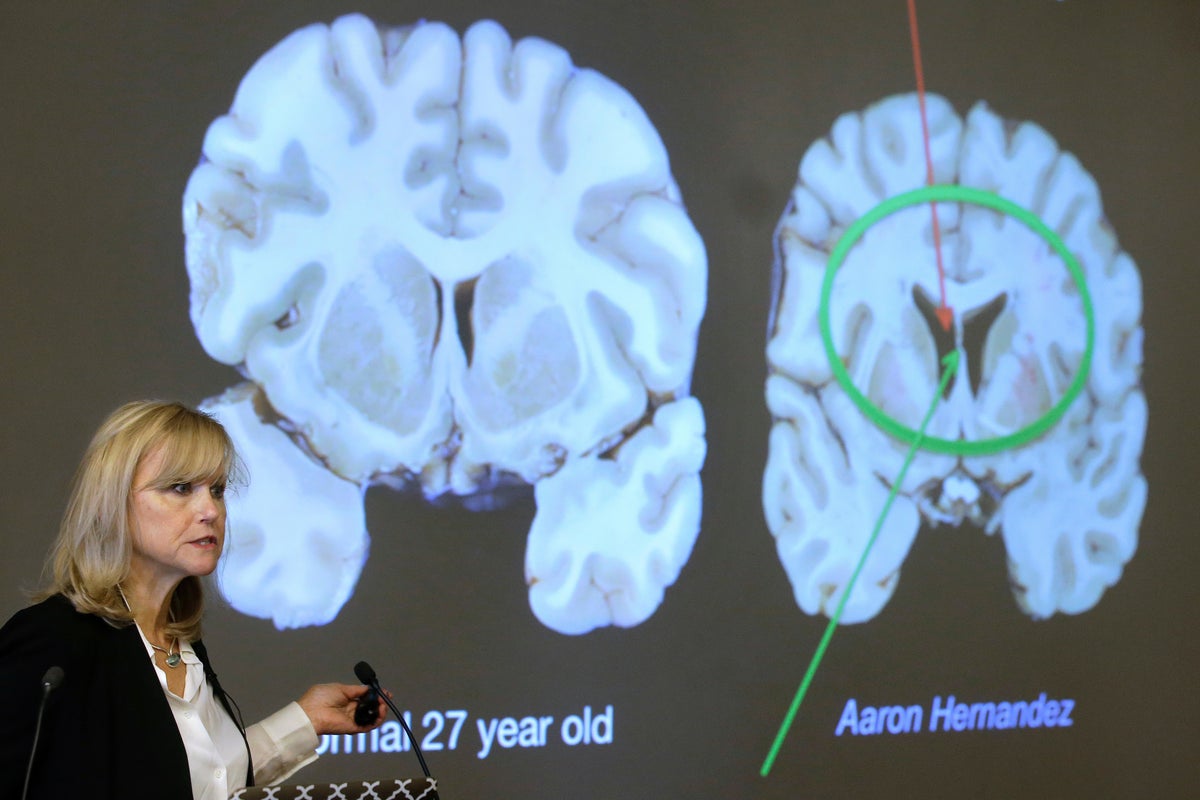
The degenerative brain disease that has besieged the National Football League for two decades with a billion-dollar lawsuit, congressional hearings, an A-list movie and an unrelenting cortege of ex-players’ obituaries intruded on America's favorite sport in the most violent manner yet when a gunman who turned out to have the disease killed four people earlier this year.
At the time of the July 28 attack, Shane Tamura, the Las Vegas casino worker who targeted the New York City skyscraper that is home to the NFL’s headquarters, carried a note blaming the league for his mental health problems.
Tamura, 27, who played football in high school, said in a three-page note found in his wallet that he had chronic traumatic encephalopathy — diagnosable only after death — and implored those who found him: “Study my brain.” Among his grievances against the NFL was a claim that the league put its profits ahead of player safety by concealing the harm CTE, and football, can cause.
On Friday, a New York City medical examiner reported that Tamura, who fatally shot himself in the chest after the rampage, had “unambiguous diagnostic evidence” of low-stage CTE.
A degenerative brain disease that has been linked to concussions and other head trauma common in military combat and contact sports, CTE has been diagnosed in more than 100 former NFL players and arisen as an existential threat to the United States’ most powerful pro sports league.
Here is what we know and don’t know about the connection between CTE, the NFL and the shooter.
What is CTE?
Chronic traumatic encephalopathy can affect regions of the brain involved with regulating behavior and emotions. This can lead to memory loss, depression, violent mood swings and other cognitive and behavioral issues, though researchers note that these symptoms can also be linked to other illnesses.
Experts say symptoms can arise years or decades after the last brain trauma. Evidence of the disease has been found not just in those with long professional careers but in high school athletes as well.
Its dangers have led some states to consider banning youth football, prompted leagues at most levels to limit contact drills in practice and spawned a series of concussion protocols and other rule changes designed to take the most violent edges off the hard-hitting sport.
Why is it associated with the NFL?
Researchers have established a connection between CTE and contact sports, military combat and other activities with repeated blows to the head. After more than a decade of denial, the NFL conceded the link between football and CTE in 2016 testimony before Congress, and has so far paid more than $1.4 billion to retired players to settle concussion-related claims.
The 2015 Will Smith film “Concussion” detailed the pioneering efforts of forensic pathologist Bennet Omalu, whose diagnosis of CTE in Pittsburgh Steelers Hall of Fame center Mike Webster was the first in a former NFL player. Hall of Famers Ken Stabler, Frank Gifford and Junior Seau have also been diagnosed with CTE, as has Aaron Hernandez; in a 2017 paper, evidence of the disease was found 110 of the 111 former NFL players' brains studied.
What did the medical examiner find?
CTE can only be diagnosed definitively by examining the brain posthumously through an autopsy.
The medical examiner’s report determined that Tamura suffered from the degenerative brain disease but did not reach a conclusion on the cause of the disease.
“CTE may be found in the brains of decedents with a history of repeated exposure to head trauma,” the report said. “The science around this condition continues to evolve, and the physical and mental manifestations of CTE remain under study.”
Tamura didn’t play professional football but played during his high school years in Southern California, where he grew up.
___
Associated Press writers Maryclaire Dale, Laura Ungar and Josh Offenhartz contributed to this story.







